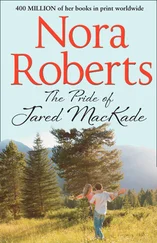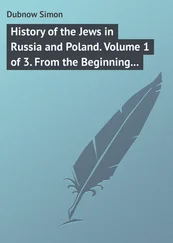As for the choice of topics, I picked nine fields for discussion in 11 chapters, in order to illustrate a spectrum of the ways in which we can use our understanding of traditional societies. Two topics—dangers and child-rearing—involve areas in which we as individuals can consider incorporating some practices of traditional societies into our own personal lives. These are the two areas in which the practices of some traditional societies among which I have lived have most strongly influenced my own lifestyle and decisions. Three topics—treatment of the elderly, languages and multilingualism, and health-promoting lifestyles—involve areas in which some traditional practices may offer us models for our individual decisions, but may also offer models for policies that our society as a whole could adopt. One topic—peaceful dispute resolution—may be more useful for suggesting policies for our society as a whole than for guiding our individual lives. With respect to all of these topics, we must be clear that it is not a simple matter to borrow or adapt practices from one society into another society. For instance, even if you admire certain child-rearing practices of some traditional society, it may prove difficult for you to adopt that practice in rearing your own children if all other parents around you are rearing their children in the ways of most modern parents.
As regards the topic of religion, I don’t expect any individual reader or society to espouse some particular tribal religion as a result of my discussion of religions in Chapter 9. However, most of us in the course of our lives go through a phase or phases in which we are groping for resolution of our own questions about religion. In such a phase of life, readers may find it useful to reflect on the wide range of meaning that religion has held for different societies throughout human history. Finally, the pair of chapters on warfare illustrates an area in which, I believe, understanding of traditional practices may help us appreciate some benefits that state government has brought us, compared to traditional societies. (Don’t react instantly in outrage by thinking of Hiroshima or trench warfare and closing your mind to a discussion of the “benefits” of state warfare; the subject is more complicated than it may at first seem.)
Of course, this selection of topics omits many of the most central subjects of human social studies—such as art, cognition, cooperative behavior, cuisine, dance, gender relations, kinship systems, language’s debated influence on perceptions and thought (the Sapir-Whorf hypothesis), literature, marriage, music, sexual practices, and others. In defense, I reiterate that this book does not aim to be a comprehensive account of human societies, that it instead selects a few topics for the reasons given above, and that excellent books discuss these other topics from the perspective of other frameworks.
As for my choice of societies, it isn’t feasible in a short book to draw examples from all small-scale traditional human societies around the world. I decided to concentrate on bands and tribes of small-scale farmers and hunter-gatherers, with less on chiefdoms and still less on emerging states—because the former societies are more different from, and can teach us more by contrast with, our own modern societies. I repeatedly cite examples from a few dozen such traditional societies around the world ( Plates 1– 12). In that way, I hope that readers will build up a more complete and nuanced picture of these few dozen societies, and will see how different aspects of societies fit together: e.g., how child-rearing, old age, dangers, and dispute resolution play out in the same society.
Figure 1. Locations of 39 societies that will be discussed frequently in this book.
New Guinea and neighboring islands.1 = Dani. 2 = Fayu. 3 = Daribi. 4 = Enga. 5 = Fore. 6 = Tsembaga Maring. 7 = Hinihon. 8 = Mailu Islanders. 9 = Trobriand Islanders. 10 = Kaulong.
Australia.11 = Ngarinyin. 12 = Yolngu. 13 = Sandbeach. 14 = Yuwaaliyaay. 15 = Kunai. 16 = Pitjantjatjara. 17 = Wiil and Minong.
Eurasia.18 = Agta. 19 = Ainu. 20 = Andaman Islanders. 21 = Kirghiz. 22 = Nganasan.
Africa.23 = Hadza. 24 = !Kung. 25 = Nuer. 26 = African Pygmies (Mbuti, Aka). 27 = Turkana.

North America.28 = Calusa. 29 = Mainland Chumash. 30 = Island Chumash. 31 = Iñupiat. 32 = Alaska North Slope Inuit. 33 = Great Basin Shoshone. 34 = Northwest Coast Indians.
South America.35 = Ache. 36 = Machiguenga. 37 = Piraha. 38 = Siriono. 39 = Yanomamo.
Some readers may feel that disproportionate numbers of my examples are drawn from the island of New Guinea and adjacent Pacific islands. Partly, that’s because it’s the area that I know best, and where I have spent the most time. But it’s also because New Guinea really does contribute a disproportionate fraction of human cultural diversity. It’s the exclusive home of 1,000 of the world’s approximately 7,000 languages. It holds the largest number of societies that even in modern times still lay beyond the control of state government or were only recently influenced by state government. Its populations span a range of traditional lifestyles, from nomadic hunter-gatherers, seafarers, and lowland sago specialists to settled Highland farmers, composing groups ranging from a few dozen to 200,000 people. Nevertheless, I discuss extensively the observations of other scholars about societies from all of the inhabited continents.
So as not to deter potential readers from reading this book at all by its length and price, I have omitted footnotes and references for individual statements inserted into the text. Instead, I gather references in a Further Readings section organized by chapters. The portions of that section providing references applicable to the whole book, and references for this Prologue, are printed at the end of the text. The portions providing references for Chapters 1– 11and the Epilogue are not printed but are instead posted on a freely accessible Web site, http://www.jareddiamondbooks.com. Although the Further Readings section is much longer than most readers will want, it still does not pretend to be a complete bibliography for each chapter. Instead, I select recent works that will offer readers with specialized interests bibliographies of that chapter’s material, plus some classic studies that readers will enjoy.
This book contains 11 chapters grouped into five parts, plus an epilogue. Part 1, consisting of the single Chapter 1, sets the stage on which the topics of the remaining chapters play out, by explaining how traditional societies divide space—whether by clear boundaries separating mutually exclusive territories like those of modern states, or by more fluid arrangements in which neighboring groups enjoy reciprocal rights to use each other’s homelands for specified purposes. But there is never complete freedom for anyone to travel anywhere, so traditional peoples tend to view other people as split into three types: known individuals who are friends, other known individuals who are enemies, and unknown strangers who must be considered as likely enemies. As a result, traditional people could not know of the outside world distant from their homeland.
Part 2then comprises three chapters on dispute resolution. In the absence of centralized state governments and their judiciaries, traditional small-scale societies resolve disputes in either of two ways, one of which is more conciliatory, the other more violent, than dispute resolution in state societies. I illustrate peaceful dispute resolution ( Chapter 2) by an incident in which a New Guinea child was killed accidentally, and the child’s parents and the killer’s associates reached agreement on compensation and emotional reconciliation within a few days. The goal of such traditional compensation processes is not to determine right or wrong, but instead to restore a relationship or non-relationship between members of a small society who will encounter each other repeatedly for the rest of their lives. I contrast this peaceful form of traditional dispute resolution with the operation of the law in state societies, where the process is slow and adversarial, the parties are often strangers who will never encounter each other again, the focus is on determining right or wrong rather than on restoring a relationship, and the state has its own separate interests which may not coincide with those of the victim. For a state, a governmental justice system is a necessity. However, there may be some features of traditional peaceful dispute resolution that we could usefully incorporate into state justice systems.
Читать дальше











